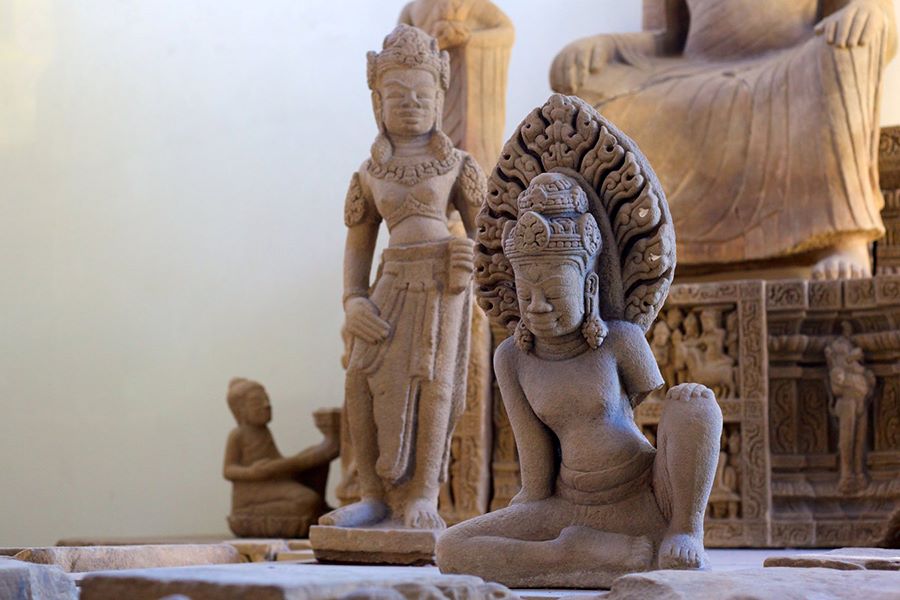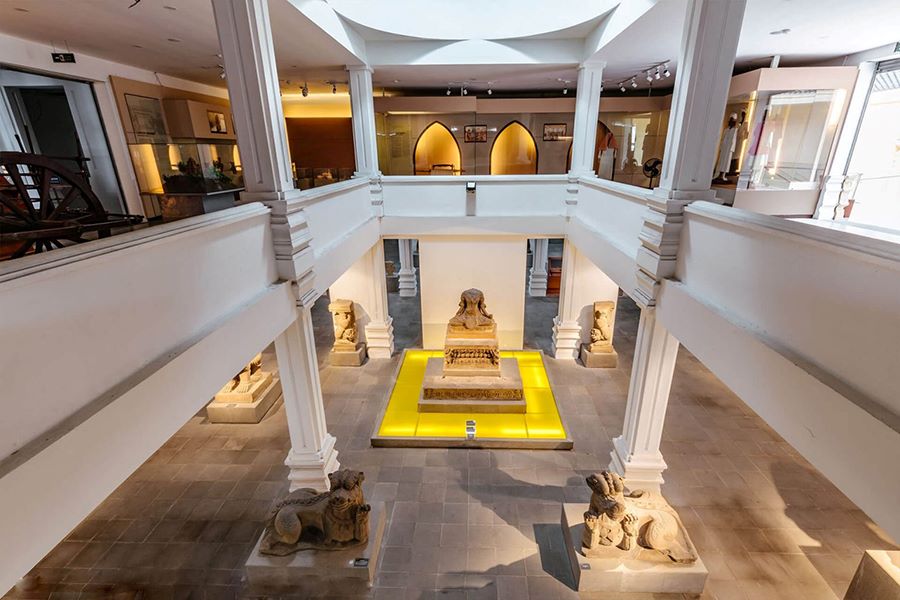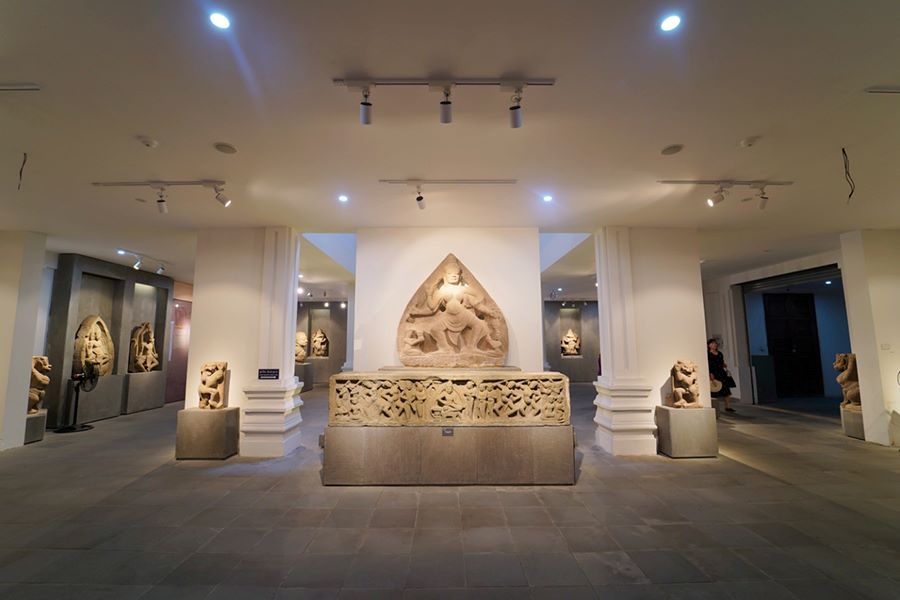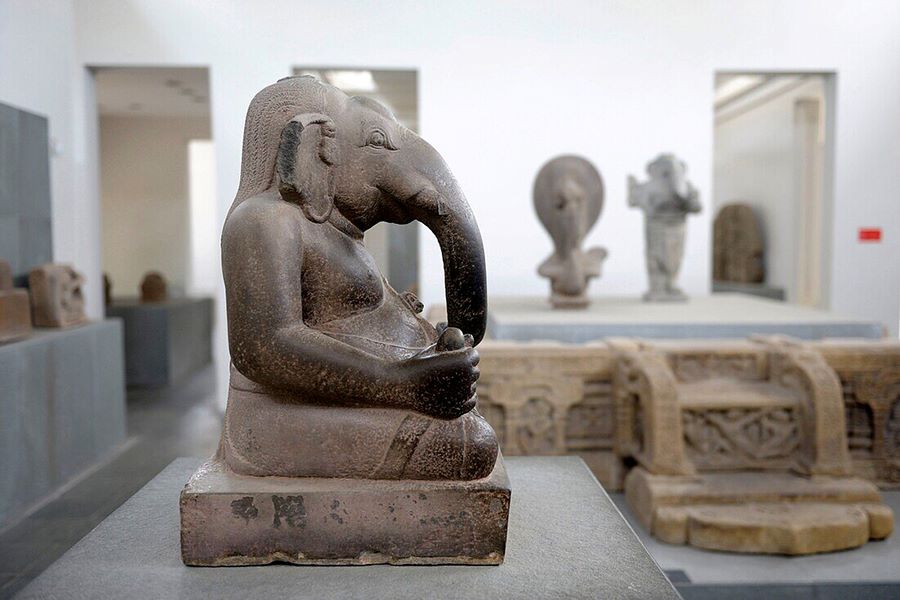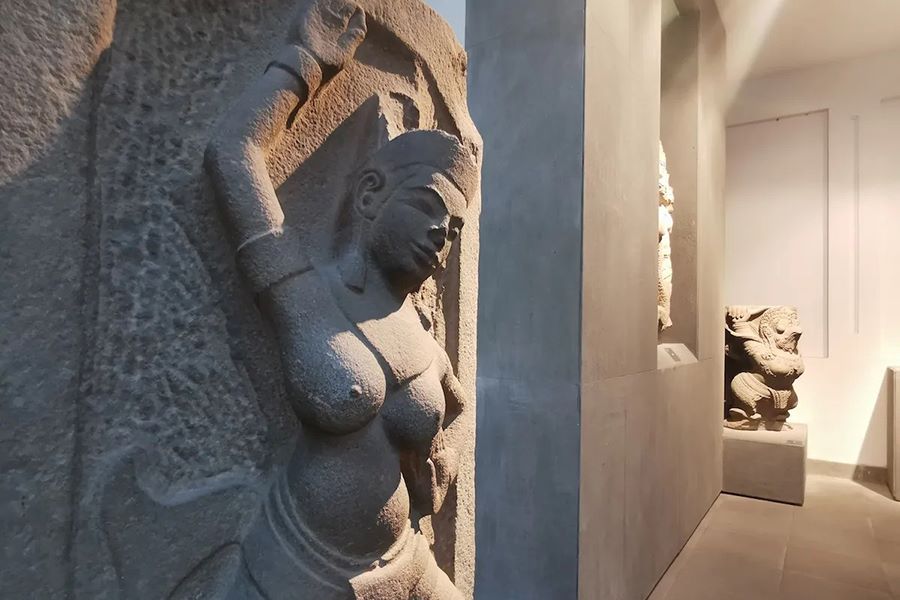The Museum of Cham Sculpture presents sculptural and art relics of the ancient Cham Kingdom from thousands of years ago. Come to Cham Museum to broaden your historical knowledge in a way that no book could. Located at the corner of Bach Dang and Trung Nu Vuong streets, on the bank of the Han River, the Museum of Cham Sculpture is currently the largest Cham museum in the country, the pride of the residents of the coastal city. It is one of the many must-visit tourist attractions when coming to Da Nang with DMC for Vietnam.
Where is the Cham Museum in Vietnam?
Known as the very first museum built by the French, the Cham Museum is the safekeeping place of numerous precious collections of sculptural and art relics of the Champa Kingdom found along the South Central Coastal Provinces. Right opposite the Vietnam Television Center, the Museum of Cham Sculpture is located at the intersection of 2/9 Street and Trung Nu Vuong Street.
Cham Museum in Da Nang was first opened to tourists in 1919 after 4 years of construction. Through several expansions and renovations, the museum has become the ideal destination for history enthusiasts to explore the imprint of the once-flourished Cham Kingdom.
With a total area of 6,673 square meters, This Da Nang museum houses the world’s largest exhibition of Champa cultural artifacts, an area of 2,000 square meters is for displaying ancient relics, while the rest of the area shows a rare collection of pictures and documents about Cham culture.
The development history of the Museum of Cham Sculpture in Da Nang
Despite being officially under construction in 1915, the foundation of the Museum of Cham Sculpture was first initiated at the end of the 19th century by the Ecole Francaise d’Extreme Orient (EFEO). A collection of artifacts was gathered from Cham temples and towers stretching throughout Central Vietnam, from Quang Binh to Binh Dinh Province, and were then displayed at Le Jardin de Tourane Park on a small hill by the Han River.
- 1915: The museum was officially under construction for the purpose of preserving and displaying the vestiges of Champa civilization.
- 1919: The museum opened to the public.
- 1930: The museum underwent the first expansion due to the enormous number of excavated antiquities. At the same time, the tour route was reconfigured with sculptures being displayed in galleries named after locations, while still following a reasonable chronology.
- 2002: The museum underwent the second expansion, adding a storage area, restoration workshop, research rooms, and exhibition rooms for contemporary Cham culture, including a collection of the Cham ethnic people’s costumes, musical instruments, and festival images.
- 2011: The Museum of Cham Sculpture was named a “first-class museum” in Vietnam, thereby affirming the museum’s great contributions to preserving Champa’s cultural heritage values.
- 2016: Da Nang City restored and upgraded the buildings and galleries of the museum while maintaining the original architectural style. The refurbished building featured new amenities including an education center, reception hall, auditorium, thematic exhibition rooms, and a souvenir shop, etc.
Highlights of Cham Museum in Da Nang
The iconic architectural style of the Cham Museum
The original building was designed by two French architects, Delaval and Auclai. Based on the suggestion of Henri Parmentier, chairman of the Department of Archeology of the EFEO Institution, the architectural style of the museum is a blend between classical European Gothic design and Cham traditional art.
Influenced by the structure of Cham Temples, the Museum of Cham Sculpture sits uniquely within the surroundings with its distinct pyramid-shaped roof. Moreover, large rooms filled with numerous windows expose the museum to exterior daylight. Although it has undergone few renovations, the original architectural features remain almost intact to this day, even after over 100 years.
Various exhibition rooms
Currently, the museum has more than 2,000 cultural artifacts of the Cham dynasty, but only about 500 antiques are on display and the rest are carefully stored in the warehouse.
Visitors will have the opportunity to admire hundreds of relics including national treasures and various outstanding Champa sculptural works of different materials such as sandstone, terracotta, metal, etc from the 5th to the 15th centuries. The artifacts appear to be variations on several central themes from fertility symbols, and mythical creatures to architectural decorations of Hindu and Buddhist gods, which reflect the diverse cultural and religious life of the ancient Champa people in the central region of Vietnam.
In order to provide visitors with a convenient, easy-to-follow trip, the antiques are put into different location-based galleries depending on where they were excavated such as Tra Kieu Gallery, Thap Ma Gallery, My Son Gallery, etc. A visit to the museum will allow you to admire the glorious times of the ancient nation.
National treasures
At Da Nang Museum of Cham Sculpture, there are currently 3 antiquities classified as national treasures: My Son E1 altar, Tra Kieu altar, and Tara Bodhisattva statue.
Notes when visiting the Museum of Cham Sculpture
Visitors need to show their entrance tickets at the door.
- Do not touch the artifacts. Do not climb, sit on the podiums.
- Do not bring explosives, flammable substances, and dangerous items into the museum.
- Do not bring large pieces of luggage into the museum. Hand luggage of over 3 kilograms can be left at the luggage counter.
- Maintain general hygiene in the museum premises.
- When entering the museum, you should dress neatly and formally.
The Museum of Cham Sculpture should definitely be on your must-visit list when traveling to Da Nang. You will time-travel to a once-mighty nation and have the chance to grasp the stunning art masterpieces of the Cham people.

